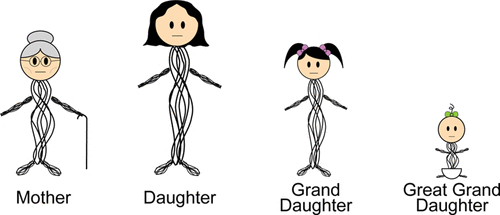当前位置:
X-MOL 学术
›
ACS Chem. Neurosci.
›
论文详情
Our official English website, www.x-mol.net, welcomes your
feedback! (Note: you will need to create a separate account there.)
Kinetic Variability in Seeded Formation of ALS-Linked SOD1 Fibrils Across Multiple Generations.
ACS Chemical Neuroscience ( IF 4.1 ) Pub Date : 2020-01-15 , DOI: 10.1021/acschemneuro.9b00464 Katelyn M Baumer 1 , Jordan C Koone 1 , Bryan F Shaw 1
ACS Chemical Neuroscience ( IF 4.1 ) Pub Date : 2020-01-15 , DOI: 10.1021/acschemneuro.9b00464 Katelyn M Baumer 1 , Jordan C Koone 1 , Bryan F Shaw 1
Affiliation

|
The unseeded aggregation of superoxide dismutase-1 (SOD1) into amyloid-like fibrils occurs stochastically in vitro and in vivo, that is, isolated populations of SOD1 proteins (within microplate wells or living cells) self-assemble into amyloid at rates that span a probability distribution. This stochasticity has been attributed to variable degrees of monomer depletion by competing pathways of amorphous and fibrillar aggregation (inter alia). Here, microplate-based thioflavin-T (ThT) fluorescence assays were performed at high iteration (∼300) to establish whether this observed stochasticity persists when progenitor ("parent") SOD1 fibrils are used to seed the formation of multiple generations of progeny fibrils (daughter, granddaughter, and great-granddaughter fibrils). Populations of progenitor fibrils formed stochastically at different rates and fluorescence intensity, however, progeny fibrils formed at more similar rates regardless of the formation rate of the progenitor fibril. For example, populations of progenitor fibrils that formed with a lag time of ∼30 h or ∼15 h both produced progeny fibrils with lag times of ∼8 h. Likewise, populations of progenitor fibrils with high or low maximum fluorescence (e.g., ∼450 or ∼75 A.U.) both produced progeny fibrils with more similar maximum fluorescence (∼125 A.U.). The rate of propagation was found to be more dependent on monomer concentration than seed concentration. These results can be rationalized by classical rate laws for primary nucleation and monomer-dependent secondary nucleation. We also find that the seeding propensity of some "families" of in vitro grown fibrils exhibit a finite lifetime (similar to that observed in the seeding of small molecule crystals and colloids). The single biological takeaway of this study is that the concentration of native SOD1 in a cell can have a stronger effect on rates of seeded aggregation than the concentration of prion-like seed that infected the cell.
中文翻译:

多代间 ALS 连接的 SOD1 原纤维种子形成的动力学变异。
超氧化物歧化酶-1 (SOD1) 无种子聚集成淀粉样蛋白原纤维在体外和体内随机发生,也就是说,分离的 SOD1 蛋白群体(在微孔板孔或活细胞内)以跨度的速率自组装成淀粉样蛋白。概率分布。这种随机性归因于无定形和纤维状聚集(尤其是)的竞争途径造成的不同程度的单体消耗。在这里,以高迭代(∼300)进行基于微孔板的硫代黄素-T(ThT)荧光测定,以确定当祖代(“亲本”)SOD1原纤维用于播种多代子代原纤维的形成时,观察到的随机性是否持续存在(女儿、孙女和曾孙女原纤维)。祖原纤维群以不同的速率和荧光强度随机形成,然而,无论祖原纤维的形成速率如何,子代原纤维以更相似的速率形成。例如,延迟时间为~30小时或~15小时形成的祖原纤维群体都产生延迟时间为~8小时的子代原纤维。同样,具有高或低最大荧光(例如~450或~75 AU)的祖原纤维群体都产生具有更相似的最大荧光(~125 AU)的子代原纤维。发现繁殖速率更依赖于单体浓度而不是种子浓度。这些结果可以通过初级成核和单体依赖性二次成核的经典速率定律来合理化。我们还发现,一些体外生长的原纤维“家族”的播种倾向表现出有限的寿命(类似于在小分子晶体和胶体的播种中观察到的情况)。 这项研究的唯一生物学结论是,细胞中天然 SOD1 的浓度对种子聚集率的影响比感染细胞的朊病毒样种子的浓度更大。
更新日期:2020-01-15
中文翻译:

多代间 ALS 连接的 SOD1 原纤维种子形成的动力学变异。
超氧化物歧化酶-1 (SOD1) 无种子聚集成淀粉样蛋白原纤维在体外和体内随机发生,也就是说,分离的 SOD1 蛋白群体(在微孔板孔或活细胞内)以跨度的速率自组装成淀粉样蛋白。概率分布。这种随机性归因于无定形和纤维状聚集(尤其是)的竞争途径造成的不同程度的单体消耗。在这里,以高迭代(∼300)进行基于微孔板的硫代黄素-T(ThT)荧光测定,以确定当祖代(“亲本”)SOD1原纤维用于播种多代子代原纤维的形成时,观察到的随机性是否持续存在(女儿、孙女和曾孙女原纤维)。祖原纤维群以不同的速率和荧光强度随机形成,然而,无论祖原纤维的形成速率如何,子代原纤维以更相似的速率形成。例如,延迟时间为~30小时或~15小时形成的祖原纤维群体都产生延迟时间为~8小时的子代原纤维。同样,具有高或低最大荧光(例如~450或~75 AU)的祖原纤维群体都产生具有更相似的最大荧光(~125 AU)的子代原纤维。发现繁殖速率更依赖于单体浓度而不是种子浓度。这些结果可以通过初级成核和单体依赖性二次成核的经典速率定律来合理化。我们还发现,一些体外生长的原纤维“家族”的播种倾向表现出有限的寿命(类似于在小分子晶体和胶体的播种中观察到的情况)。 这项研究的唯一生物学结论是,细胞中天然 SOD1 的浓度对种子聚集率的影响比感染细胞的朊病毒样种子的浓度更大。











































 京公网安备 11010802027423号
京公网安备 11010802027423号